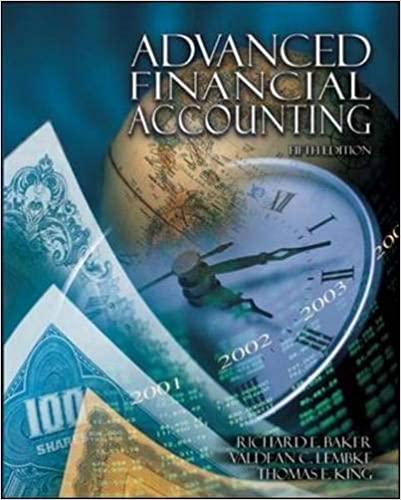Amazing Corporation purchased ($ 100,000) par value bonds of its subsidiary, Broadway Company, on December 31, 20X5,
Question:
Amazing Corporation purchased \(\$ 100,000\) par value bonds of its subsidiary, Broadway Company, on December 31, 20X5, from Lemon Corporation. The 10 -year bonds bear a 9 percent coupon rate and were originally sold by Broadway on January \(1,20 \times 3\), to Lemon Corporation. Interest is paid annually on December 31. Amazing Corporation owns 85 percent of the stock of Broadway Company.
In preparing the consolidation workpaper at December 31, 20X6, the Controller of Amazing Corporation prepared the following entry to eliminate the effects of the intercorporate bond ownership:

The assistant controller of Amazing Corporation looked at the consolidation workpapers at the end of \(20 \times 6\) and concluded he requires assistance on the following items.
\section*{Required}
a. What amount did Amazing Corporation pay when it purchased the bonds of Broadway Company?
b. Prepare the journal entry made by Broadway Company in 20X6 to record its interest expense for the year.
c. Prepare the journal entry made by Amazing Corporation in \(20 \mathrm{X} 6\) to record its interest income on the Broadway Company bonds which it holds.
d. Prepare the eliminating entry needed to remove the effects of the intercorporate bond ownership in completing a three-part consolidation workpaper at December 31, 20X5.
e. Broadway Company reported net income of \(\$ 60,000\) and \(\$ 80,000\) for \(20 \mathrm{X} 5\) and 20X6, respectively. Amazing Corporation reported income from its separate operations of \(\$ 120,000\) and \(\$ 150,000\) for 20X5 and 20X6, respectively. What amount of net income was reported for the consolidated entity in each of the two years?
Step by Step Answer:

Advanced Financial Accounting
ISBN: 9780072444124
5th Edition
Authors: Richard E. Baker, Valdean C. Lembke, Thomas E. King





